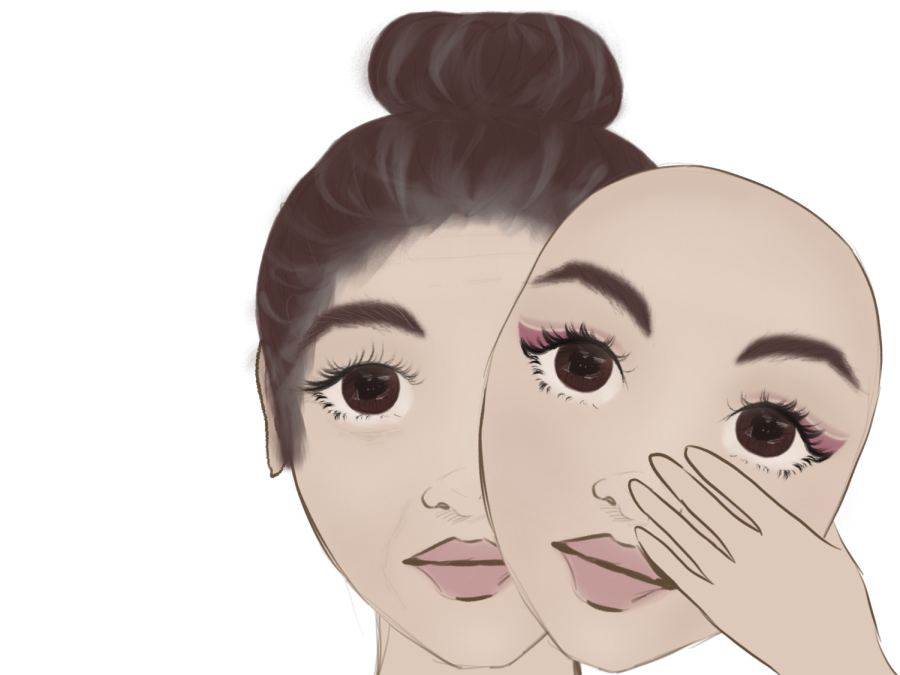Millions of customers flock to the skincare industry everyday, looking for a fix to erase wrinkles and sun damage alike. In recent years, anti-aging has become less taboo and more scientifically centered. Cutting edge technologies have swarmed the market with promises of staying young. The promises of aging gracefully bring with them a terrifying obsession with staying young. The anti-aging industry has brought with it a morbid fascination with beating the clock forever, and it’s gone too far.
It seems as though marketing teams are working overtime to make us aware of our flaws before we even notice them. Scrolling through social media, it’s easy to notice a new trend everyday which highlights natural traits showcased as something to get rid of. A particular sector of self-care efforts is in anti-aging.
Anti-aging has transformed from a pipe-dream to a multi-billion dollar industry. In 2021, this market reached $4.9 billion in the United States alone, a billion dollar increase from its worth in 2016. The anti-aging industry is no stranger to good marketing. As it continues to profit off of insecurities, we become permanent customers obsessed with the idea of staying younger for longer.
“It’s a very man-made thought process of how…when you show your age, it makes you look worn and tired,” sophomore Sarah Currie said.
New technology has shifted the market from purely surgical remedies to more preventative ones. Now, non-invasive techniques are capturing the attention of skincare junkies. These inventions range from sideways straws to avoid fine lines around your mouth to stickers that cover the width of your forehead to tighten your skin while you rest. The advertising surrounding aging has contributed strongly to the anti-aging epidemic.
As the market expanded, so did the pressure to keep up. Aging has been plastered on ads and packages as a disease in need of a cure. While anti-aging research grew, so did the world’s fear of looking older. The medical field responded with a laundry list of solutions, many of which backed by science.
One example of a scientific response is the introduction of botox to the market in 1989. Botox, made from botulinum toxin, is a treatment that paralyzes facial muscles to create the appearance of fewer wrinkles. While previously seen as taboo, it seems that the social standing on treatments such as botox has switched from shame to acceptance, with more than 4.4 million people getting the procedure in 2020.
The battle against aging hasn’t just stopped at minor procedures like these, though. Surgical dermatologist, Fayne Frey, explains that the oath she took to enter the medical professional world has become increasingly harder to fulfill with the progression of the skincare market.
“Do no harm” is a promise she made in 1987, but she reports to NBC News that keeping this promise is a challenge in her field. Doing no harm means avoiding financial, emotional and physical harm, but these are hard to meet as the humiliation of aging people always finds a home in offices like hers.
There is a fine line between reality and the expectations of anti-aging consumers. A specific moisturizer can alleviate skin conditions such as eczema, rosacea and acne, but a topical treatment has never conquered the erasure of a wrinkle.
The challenge also has some dangerous side-effects. Botox injections can cause bruising, pain, bleeding and headaches among other things. Chemical peels have been attributed with swelling, redness, scarring, infection, along with heart, kidney and liver damage. It’s clear how meeting your customers’ wants can easily do harm. Regardless of the consequences of such treatments, society has conditioned us to value a youthful appearance over anything else.
The happy-medium between looking younger and looking natural is easy to mess up too. People who do decide to go the surgical route sometimes find themselves being taken too far. We as on-lookers find ourselves asking the question, “you paid money to look like that?” while applying our prescribed retinol treatment to reduce fine lines. Shame narratives also exist internal to the anti-aging industry. Anti-aging is a movement driven by judgment and shame, inevitably resulting in disillusionment.
Chasing the unattainable only leads to disappointment. People will continue to spend thousands and will get the same results they were always destined to have. Until we as a society decide to treat aging as something to be proud of instead of a disease in need of a cure, we will always be disappointed.
It is the obligation of members of society to deconstruct the humiliation of aging that exists within our lives. While plastic surgery and expensive facial serums might help individuals feel better about themselves, the movement is bigger than individuals. Deconstructing the culture of youth takes advocacy and time to speak out against treating aging as an illness instead of an accomplishment.
“I think aging is beautiful. It shows your life on your face,” said Currie “… aging is a natural progression of life.”




